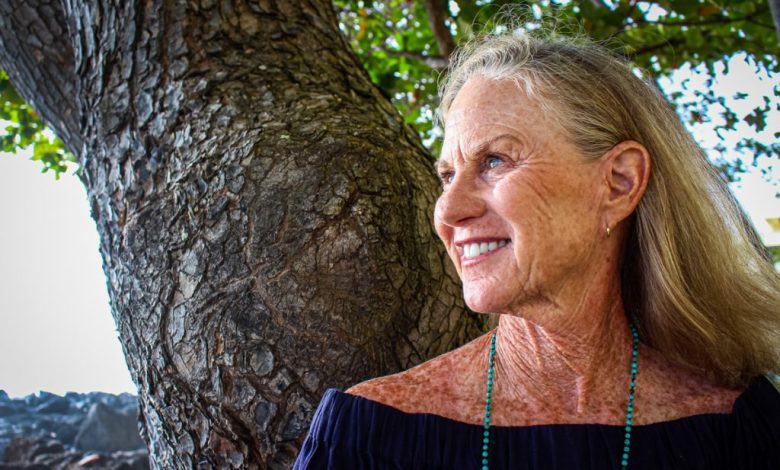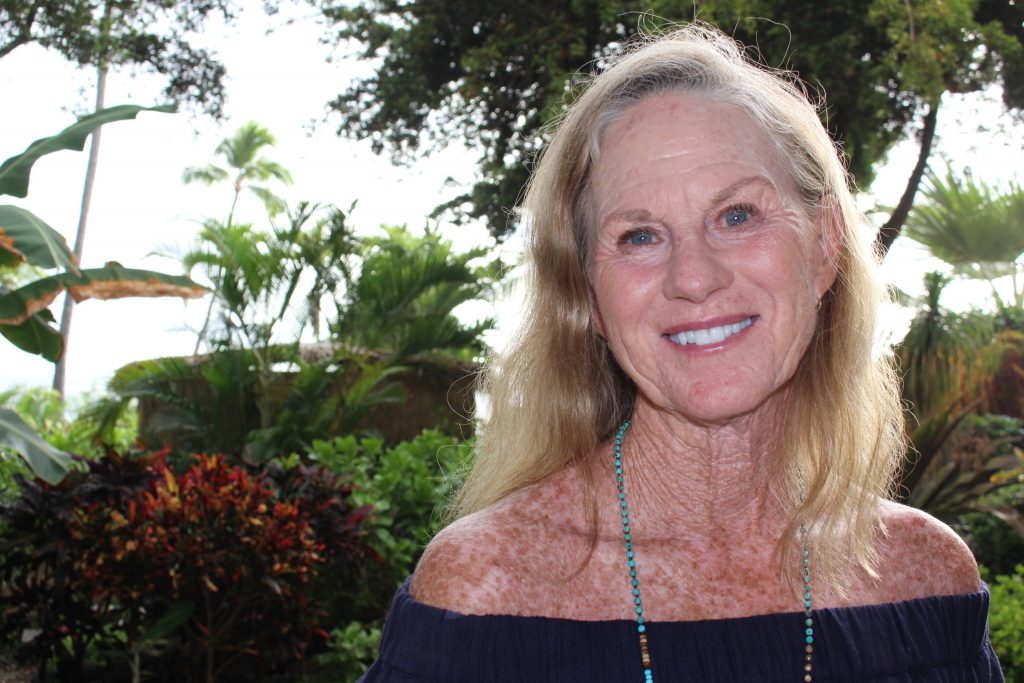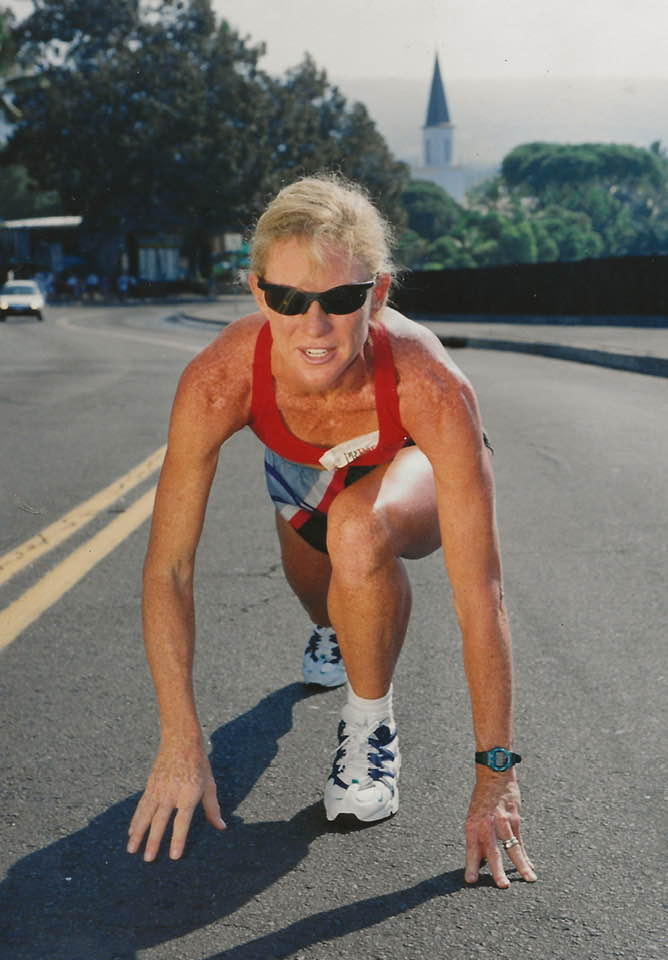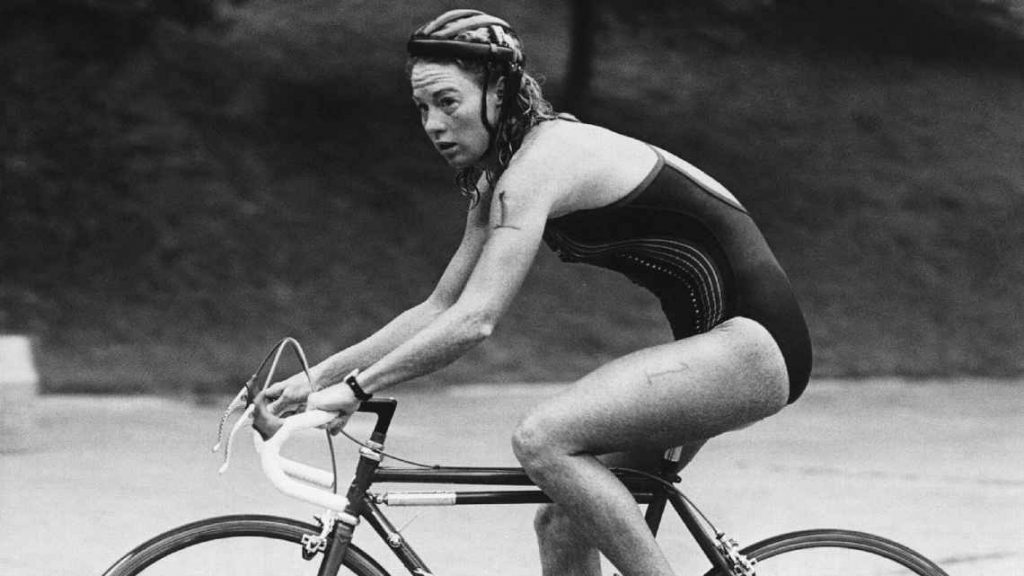Julie Moss put Ironman on the map in 1982; she’s back in Kona to support all-women’s championship : Maui Now

[ad_1]

Just 15 feet from winning the women’s grueling race — after more than 11 hours of swimming 2.4 miles, biking 112 miles and running a marathon — an exhausted 23-year-old Julie Moss stumbled. She got back up and stumbled again and again.
While Moss was sprawled on the ground, surrounded by concerned male competitors, Kathleen McCartney unknowingly passed her for the victory in 1982.
But as millions of people and most triathletes know, Moss didn’t quit.
Her famous crawl in the dark to the finish line was broadcast around the globe by ABC’s Wide World of Sports. Everyone knew who finished second.
And, 41 years later, it remains one of the most memorable moments in sports history.
“I love to say it took a woman to put Iron-man on the map,” Moss said Wednesday.
And she did.
That moment changed Ironman, and Moss’ life forever. The Ironman World Championship, which began in 1978 with an all male field, has grown into a renowned event, with Moss’ endurance, grit and determination inspiring people around the globe to become triathletes.
Triathlete Betsy Fader from New York City said Moss is a “pathbreaker” in the Ironman community.
“Particularly for the women,” she said. “I heard of Julie Moss before I ever thought about getting involved with Ironman.”
Fader said she was living in England, right out of college at the time, and didn’t know about triathlons.
“I heard the story, and remember seeing the images of her crawling across, and the struggle. I didn’t know what Ironman was, but I knew of this iconic race that she was in.”
Celeste Vanrensburg, another competitor this year, said she was in high school in South Africa and remembers the moment well.
“I thought, ‘Wow. This is crazy stuff. How does a human, a female human, do that? ‘And I think that’s where it all started for me,” she said.
During the Ironman press conference Thursday morning at the luau grounds of Courtyard by Marriott King Kamehameha’s Kona Beach Hotel, this year’s top 10 pro female triathletes answered questions from the media about the upcoming race.
When asked what Moss has meant to the Kona Ironman World Championship, Australian triathlete Sarah Crowley said growing up as a female athlete she saw stories of Moss, not realizing how the now 64-year-old carved a pathway for women in the sport and put the Kona race on the map.
“It’s amazing to be sitting here in my career having the opportunity to put something out into the world where we get to race as women on the stage set up almost 40 years ago,” said Crowley, who placed third in the event in 2017.
“She’s definitely a pioneer of the sport and I’m grateful to her for getting us where we are today.”
Ironman continues to grow its global brand with races in 50-plus countries.
Moss finished her 12th and last Ironman World Championship race in 2018. She never again made it to the podium. But she is back in Kona this week to participate in the championship, but as an advocate and a supporter.
She is enjoying being able to reconnect with Kona, the place that changed her life forever. She also has been reflecting on the growth and changes of the competition.
This is the first year the Ironman World Championship in Kona is all female, with the men’s title race held last month in Nice, France. The races were split among genders partly because the event had become so popular, with too many competitors for the Big Island’s small seaside town to be able to handle both men and women events on the same day.
“The genie is out of the bottle,” Moss said. “Now that we’ve had an all-women’s championship, we can’t go back.”
In 1982, when Moss finished was competing, she said Ironman was more of an “elite endurance race,” and women weren’t typically in the limelight.
But ABC’s Wide World of Sports knew a good story and highlighted Moss’ finish for the world to see. Various versions are on YouTube and other places to watch the grainy, dark footage.
“I noticed a young Hawaiian woman, she wouldn’t leave my side,” Moss recalled of the replay. “She was just walking and there was a quiet over the entire crowd. … They were willing me to keep getting up and trying again.”
She said it was surreal.
“I could feel energy around me,” she said. “I wasn’t able to really talk. I wasn’t able to accept a lei that my mother was trying to put around my neck because I thought I would fall over, but I certainly sensed there was this energy that was pushing me, willing me to go, when I wasn’t sure I had any more left in me.”
Now she was able to joke about her stumbles: “I got a good one in at the banyan tree.”
Moss recounted that race and her life and career in the years since in a memoir called “Crawl of Fame.”

She said the experience humbled her. Had she won, she said: “I think I would have had such an ego about it.”
Instead, she got to uncover parts of herself she never knew existed.
“The beauty of the human spirit showed through,” she said. “And it was my human spirit that was shining through.”
Coming from a privileged background born and raised in California, she said she had a pretty comfortable life, and that incident launched her journey into herself.
“But here I am finding a place within myself, being pushed so far out of my comfort zone and I was struggling, and the more I struggled, the more I found this deeper part of myself,” she said. “I think it was buried, under the lava. It kind of just exploded off of my heart and I found there was something in me that was there, and I wouldn’t have found it any other way.”
Since then, she’s developed a relationship with Hawai’i, she said, saying it reminds her of a nurturing mother, and even carries memories she has with her mother, who passed in 2002.
“I feel like I grew up, and found that strong woman within me out there on the lava fields and that is a relationship I will carry with me until my last day,” she said.
Over the years she said she’s watched as the technology has changed the race scene, and triathletes have more access to resources for diet, nutrition, but with that comes with the added pressure of creating a social media presence. She remembers when sponsors would take care of outreach for you, but not anymore.
“I know what it was like to do it so simply,” she said.
In 1982, Moss was a college student in California, studying kinesiology. She said if she could tell her 23-year-old self anything, it would be to stay strong.

“I would tell her now this is a lesson and you were only going to get it this way. And remember you have this inside of you always,” she said. “You have more in you and you can be strong, brave and courageous.”
She said that’s why she continues to come back to Ironman.
“So I can find that person again within myself,” she said. “I would come back to this island to find that part of me again. To be that fearless 23-year-old again.”
[ad_2]
Source: Maui News




